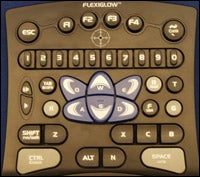Hewlett Packard on June 19 introduced a slew of “green” storage software and hardware products that the company claims can cut storage array power and cooling costs in data centers for enterprises and SMBs by as much as 50 percent.
The Palo Alto, Calif., company made the announcement at the HP Americas StorageWorks Conference in Las Vegas.
These products come at a time when enterprises are continuing to push technology vendors to find ways to help them reduce power and cooling costs in their data centers.
“The importance of energy efficiency is growing in everyone’s minds,” said Patrick Eitenbichler, director of marketing for HP’s StorageWorks business. “It’s no longer trivial. It’s actually a big deal.”
The new products—the latest additions to the company’s
Thin provisioning—a key ingredient in these products—is a way that IT administrators can use storage resource management and virtualization to put limits on the allocation of physical storage to meet what applications immediately need. The result is improved capacity on demand up to preset limits, so that enterprises can reduce the need to buy and manage excess disk storage.
According to analyst firm StorageIO Group, storage currently accounts for 37 to 40 percent of overall data center energy usage from hardware. Using Hewlett-Packard’s new storage products, a customer with a monthly storage electric bill of $3,000 could save as much as $18,000 per year in power and cooling costs, according to HP.
That type of calculation will become more of an issue for IT departments as they take on more and more budget concerns, Eitenbichler said. He said HP has found that in only 20 percent of cases it has looked at do the energy costs come out of the IT budget. It’s usually the facilities group that pays those bills.
According to HP, its StorageWorks EVA4100, 6100 and 8100 midrange disk arrays can improve power efficiency by up to 45 percent and performance by as much as 24 percent over previous EVAs.
Using hardware and software technologies such as EVA DCM (Dynamic Capacity Management), Vsnap and FATA (Fibre ATA) disk drives, the new EVAs help IT managers optimize hard drive utilization, HP said. Eitenbichler said DCM is similar to thin provisioning, but gives users the flexibility to not only increase capacity, as thin provisioning does, but also decrease it as needed.
DCM will initially be offered for Windows environments, but support for Linux and HP-UX implementations will come in the near future, he said.
“We did a study in 2006 that found that 55 percent of end users we surveyed left between 30 and 50 percent of their storage capacity stranded,” said Tony Asaro, senior analyst with Enterprise Strategy Group, an industry analyst firm focused on storage and information management.
Tape will continue to be a key technology in the storage industry, despite years of claims that it was fading away, and energy efficiency is one reason, Eitenbichler said. Enterprises will need to continue to store large amounts of data for long periods of time. It makes more fiscal and environmental sense to store older data on tapes rather than on spinning disks that are eating up power, he said.

